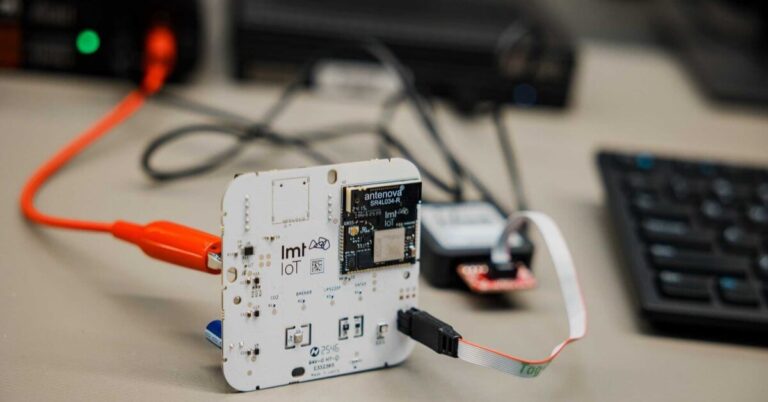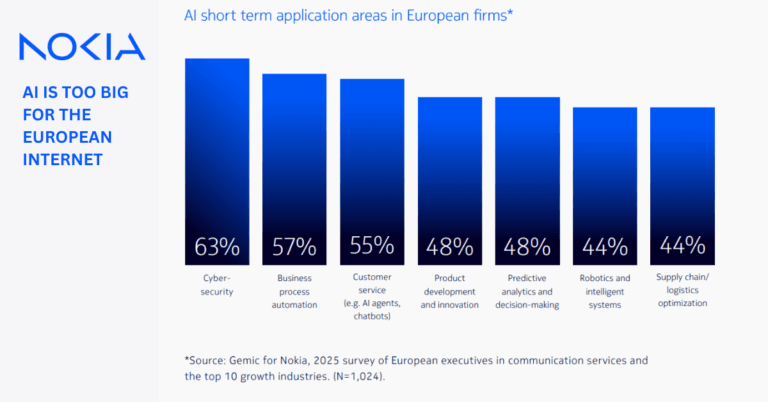Executive summary: AI at the edge for real-time cyber defense
CrowdStrike and NVIDIA are aligning open models, edge inference, and agentic tooling to push real-time, autonomous cyber defense into data centers, clouds, and MEC sites where telecom and enterprise workloads actually live.
Why now: machine-speed attacks demand edge AI defense
Attackers already operate at machine speed, chaining tooling and AI to probe APIs, exploit misconfigurations, and pivot across hybrid estates faster than human analysts can respond. By pairing CrowdStrike’s Charlotte AI AgentWorks with NVIDIA’s Nemotron open models, NeMo Data Designer, NeMo Agent Toolkit, and NIM microservices, the partners aim to shrink detection-to-response windows from minutes to milliseconds, and to do so where latency is lowest—at the edge. For telecom operators, cloud providers, and large enterprises, this is a path to SOC-grade autonomy that aligns with data sovereignty and on-prem constraints.
Strategy: unify telemetry with governed, local AI agents
The playbook is to unify high-fidelity telemetry with locally hosted, continuously learning agents that act within enterprise guardrails. That combination could reduce dwell time, cut SOC toil, and harden critical infrastructure spanning 5G cores, RAN, and enterprise OT/IT edges. It also signals where the market is going: agentic security embedded next to workloads, not just centralized in the cloud.
Announcement: CrowdStrike + NVIDIA expand agentic AI security
The companies expanded their collaboration to deliver always-on, continuously learning AI agents that defend cloud, data center, and edge environments using open and enterprise-grade NVIDIA AI components integrated with CrowdStrike’s Agentic Security Platform.
Architecture components: models, toolkits, and acceleration
Charlotte AI AgentWorks becomes the scaffolding for agent behavior, tool use, and enterprise guardrails. NVIDIA Nemotron open models—fine-tuned with CrowdStrike-curated data via NeMo Data Designer—provide foundational reasoning that customers can further tune with their own telemetry. NVIDIA’s NeMo Agent Toolkit and NIM microservices package retrieval, function calling, and inference APIs for production. Together they run on NVIDIA accelerated computing and CUDA-X libraries for low-latency inference on-prem, in private cloud, or at MEC.
Telemetry-to-action loop with local inference
CrowdStrike’s Agentic Security Platform—spanning Falcon LogScale, Onum, and Pangea—feeds enriched telemetry into locally hosted models and agents. The goal is a closed loop: collect and normalize at scale, reason with context, then act autonomously or with human oversight. Operating at the edge keeps sensitive data local, helps with regulatory alignment, and slashes response latency for time-critical workloads.
Impact on telecom, 5G, MEC, and edge security
Moving autonomous defense to the edge aligns with MEC, private 5G, and distributed cloud strategies where latency, data residency, and availability are non-negotiable.
Protecting distributed, high-availability telco infrastructure
Telco networks are sprawling targets—RAN sites, CU/DU, 5G core, OSS/BSS, and partner interconnects. Agents running adjacent to user plane and control plane functions can correlate anomalies across signaling, API gateways, and containerized network functions, then contain threats without hauling raw data to a central SOC. For private 5G and industrial edge, local inference can protect OT assets and minimize operational disruptions.
Data sovereignty, residency, and regulatory alignment
Keeping inference and fine-tuning on-prem or within region helps satisfy data sovereignty mandates that govern subscriber data, telemetry, and incident artifacts. Support for NVIDIA’s AI Factory for Government reference design is relevant to federal and high-assurance environments, and more broadly to regulated sectors that must segment AI workloads and prove control over models, data, and actions.
How agentic AI augments the modern SOC/NOC
Think of this as a layered system that turns streaming telemetry into reasoned, guarded actions at machine speed, with humans setting policy and oversight.
Reference architecture in practice
Falcon LogScale and related services build a unified telemetry fabric across endpoints, cloud workloads, identities, and network signals. NIM microservices expose standardized inference endpoints for locally hosted Nemotron-derived models optimized with the NeMo Agent Toolkit. Agents use tool connectors to query data stores, execute playbooks, isolate assets, or open tickets, while adhering to enterprise-defined guardrails. CUDA-X acceleration keeps inference responsive on GPUs deployed in data centers and MEC nodes.
Operational considerations and integrations
Enterprises should plan for GPU scheduling across multiple AI workloads, versioned model registries, prompt and tool governance, and red-team testing of agentic behaviors. Expect integration with existing SIEM/SOAR, ITSM, and cloud-native controls to determine how far autonomous actions can go by environment, severity, and business impact.
Risks, challenges, and governance for agentic AI
Agentic security can reduce risk exposure, but it introduces new operational and compliance challenges that must be addressed upfront.
Model and agent risks and mitigations
Hallucinations, tool misuse, and prompt injection require layered defenses: strict guardrails, allow/deny toollists, role-based policies, environment scoping, and continuous evaluation with synthetic and real adversarial tests. Model drift and data leakage risks call for differential privacy options and disciplined MLOps.
Compliance, auditability, and controls
Regulators will expect clear lines of accountability for autonomous actions, audit trails for every decision, and demonstrable controls across training data, inference, and action execution. Align your controls to frameworks like NIST’s AI Risk Management Framework and existing security baselines, and ensure data residency contracts cover telemetry used for fine-tuning.
Next steps for enterprise and telecom leaders
Translate the announcement into a pragmatic roadmap that fits your estate, risk posture, and regulatory constraints.
Immediate actions and pilot guidance
Map critical workloads that justify edge inference (MEC, private 5G, OT). Inventory GPU capacity and plan footprint where latency and data residency matter. Stand up a pilot: stream a defined telemetry slice into locally hosted models via NIM, fine-tune on non-sensitive data first with NeMo Data Designer, and wire agents to read-only tools to validate decision quality.
Scaling with governance, SLAs, and KPIs
Define guardrails by environment and severity; integrate with SOAR for graduated autonomy; instrument full audit logging; and establish model registries and evaluation gates. Negotiate commercial terms for model ownership, data usage, and support SLAs. Track KPIs such as time to detect/respond, false positive reduction, analyst task automation rate, and service impact avoidance in edge environments.
Market watch: benchmarks and ecosystem signals
Expect rapid follow-on from platform players that blend SIEM/XDR with agentic AI and edge inference. Watch for benchmarks on latency, cost per protected workload, and open-model portability across vendors—these will separate marketing from meaningful capability.
Bottom line: bringing open-model, agentic security to the edge is a practical way to cut response times and respect data boundaries; the winners will be the teams that pair this capability with disciplined governance and measurable outcomes.








































